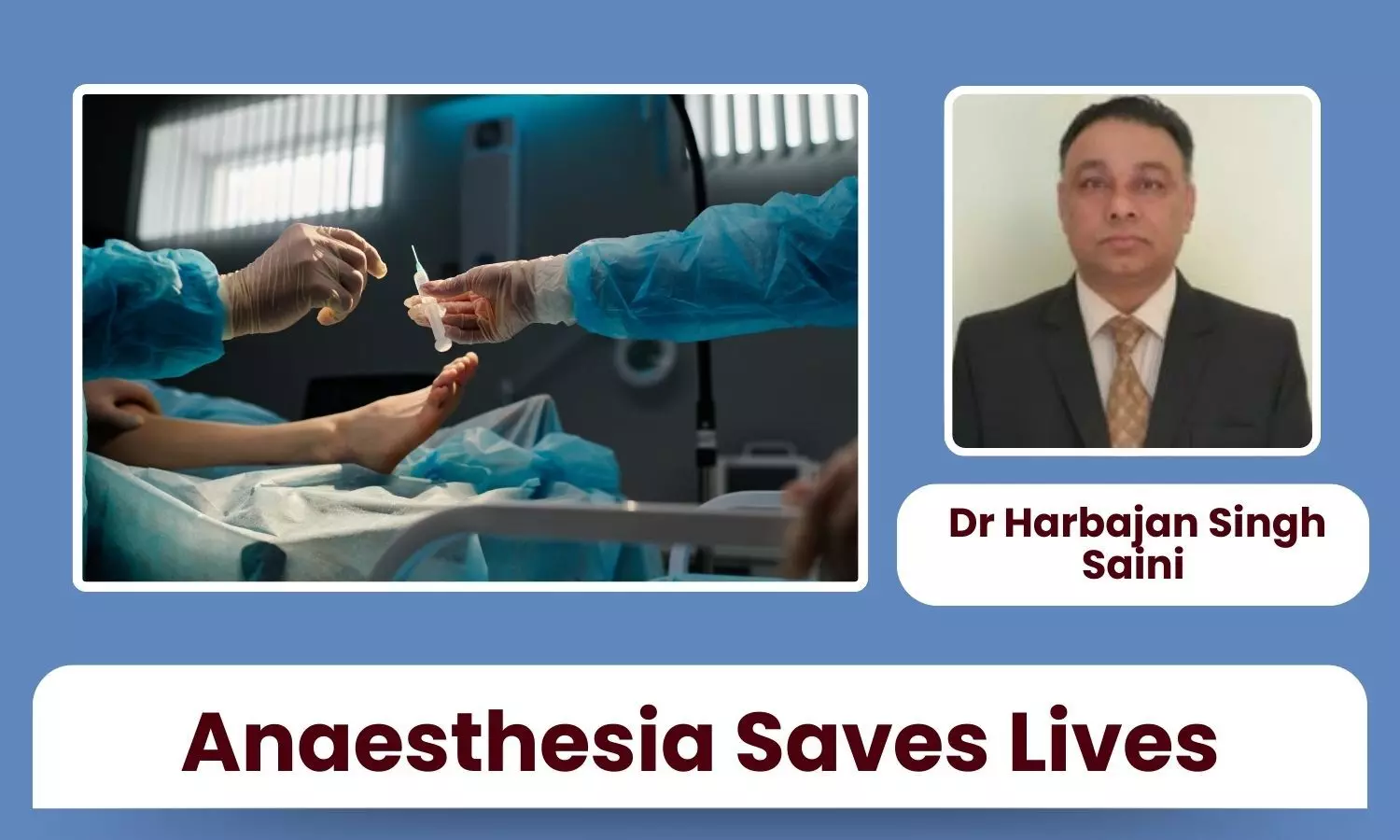Vital Role of Anaesthesia in Modern Surgery - Dr Harbajan Singh Saini

October 16 1846 is etched in the chronicles of medicine as a revolutionary turning point. On this day the world witnessed a first successful public demonstration of the surgical anaesthesia.
What started with the use of ether that day completely transformed the future of surgery and patient care forever. Since then, World Anaesthesia Day is being celebrated on regular basis in order to honour the progress of this filed and of those professionals who tried to ensure that today surgery is safe, humane and pain free as well.
From Ether to Expertise: The Evolution of Anaesthesia
The discovery of anaesthesia has completely transformed the nature of surgeries. Before 1846 surgical procedures were very brutal and traumatic, with pain endured consciously.
The introduction of anaesthetic agents allowed doctors to perform surgery with precision while spearing patients from unnecessary suffering. For nearly two centuries the science and art of anaesthesia have completely transformed through safer agents, refined techniques and advanced monitoring techniques.
Early substances like chloroform and nitrous oxide to todays well balanced anaesthesia methods by combining inhalational, intravenous, and regional approaches – this field have completely evolved into one of the most advanced and safety driven branches of medicine.
Modern day anaesthetists also help in managing some vital functions such as heart rates, blood pressure and respiration with the help of surgery in order to ensure complete psychological stability.
The Cornerstone of Modern Surgery
Anaesthesia is not a supportive process rather than it is regarded as enabler of modern medicine. It allows surgeons to perform intricate and prolonged operations which ranges from neurosurgery to cardiac bypass in which patients do not experience any kind of pain or distress.
Beyond intraoperative comfort anaesthesia plays a significant role in recovery after surgery to reduce surgical stress, preventing complications and aid for quick rehabilitation.
Anaesthetists—often referred as the silent protectors of the operation room mainly combines deep medical knowledge with the real time decision making. Their work mainly starts before the first incision and continues long after the procedure get completed as they oversee control of pain and monitor recovery.
Safety and Patient Awareness
Modern Anaesthesia is considered as the safest medical practices all thanks to meticulous preoperative assessment, well standardized safety protocols an advanced monitoring tool as well. Participation of patients continue to remain significant.
Before surgery individual should understand the type of anaesthesia being administered to him/her, share their complete medical history with doctors, follow all medical guidelines in order to minimise the complications, always discuss post operative care expectations with doctors.
Emerging Trends: Green Anaesthesia and Sustainability
In recent time, anaesthesia has taken a good lead in making healthcare system more responsible. The concept of green anaesthesia mainly focuses on reducing the carbon footprint associated with the anaesthetic gases and equipment of single use.
Through the adoption of low flow techniques, eco friendly agents and protocols related to waste reduction, anaesthesia department related across the globe are contributing regularly to a more sustainable healthcare ecosystem in order to protect both patients and the planet.
The Unsung Heroes of Medicine
Surgical success mainly captures the headlines; the contribution of an anaesthetists remains very less visible. The expertise of the same extends beyond the operating theatre to intensive care, management of pain, trauma response and emergency medicine.
They are also regarded as the guardians of consciousness and comfort in order to ensure that every surgical milestone rest on the foundation of safety and trust.
Disclaimer: The views expressed in this article are of the author and not of Health Dialogues. The Editorial/Content team of Health Dialogues has not contributed to the writing/editing/packaging of this article.


